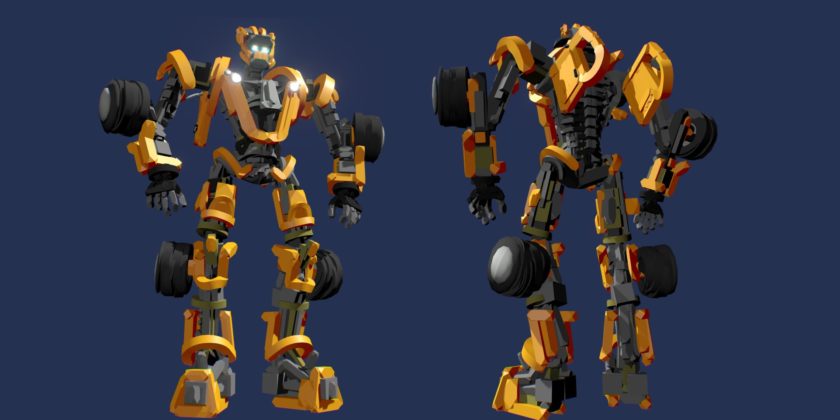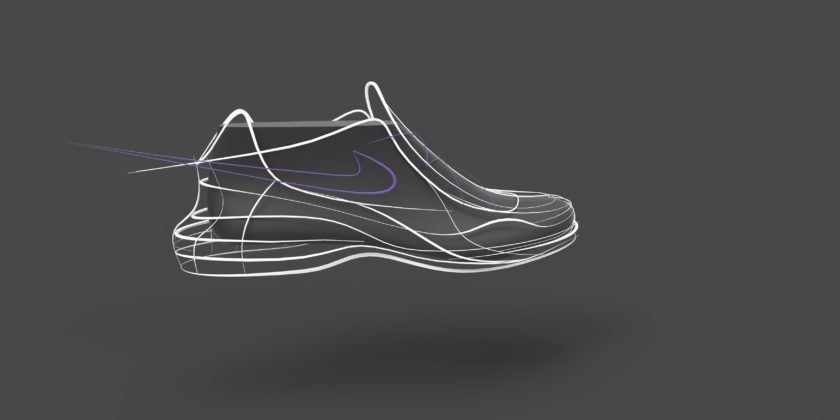Gravity Sketch: exploring the territory between craft, industry and human machine interaction
The raison d’être of Gravity Sketch provides a solution to a problem that is not, by any means, new. It’s been with us for millions of years, since our ancient predecessors scratched paintings on the walls of prehistoric caves. Humans have always thought and had ideas in 3D, but have largely represented them through 2D methods. While we see and think in 3D, we have effectively been limited for thousands of years by the materials we have.
What is Gravity Sketch?
Back in their university days, the founders of Gravity Sketch, Oluwaseyi Sosanya and Daniela Paredes, conceived of the idea to create a platform allowing designers and engineers to communicate in 3D. Putting together a rough prototype of the company while they completed their studies in design engineering and industrial design, their move into the industry came via jobs in Jaguar Land Rover.
Where, Oluwaseyi divulges, his suspicions about the siloed way that teams work in the industry were confirmed, with colleagues separated by rows of desks or walls and communication scheduled only for meetings, where everybody looked at a screen. Two very different languages were spoken, with designers working in the visual PhotoShop tool and engineers operating computer design software (CAD), based on the use of technical language and mathematical logic and relying on legacy hardware interfaces. Designers were working with creative ideas, while engineers focused on final product creation using hard data.
Developing the concept
Recognising the benefits offered by commercial gaming virtual reality, particularly HTC Vive and Microsoft Oculus, Oluwaseyi explains that they were keen to leverage the technology to create a more collaborative platform that would work across a range of sectors. Leaving Jaguar Land Rover in late 2015 to run Gravity Sketch full time, a testing tool was launched by the end of 2016, and throughout 2017 the team have been selling this into industry, where they have focused mainly on the automotive sector.
They have now released version 1.1 of the tool, have doubled in size from three to six employees and are based in a co-working office space at the Royal College of Art in Battersea, London. Still in its early stages, the tool is currently focused on the designers’ needs and the first stage of the design process, offering the power to think and illustrate in 3D. Next it will be rolled-out to engineers, fleshing out the original concept and ideas before going into CAD development.
What’s the technology behind it?
Gravity Sketch is the first cross-platform mixed reality 3D creation application, launched on Steam and Oculus. Built on a “what you see is what you get” interface, 3D objects appear in real time, creating an innovative digital authoring experience that merges the principles of craft with digital. Basing the creation of geometry in non-destructive parametric modelling, it allows users to explore infinite iterations of their ideas. Initially focused on VR headsets, the team is now, they say, “playing” with AR headsets also.
“It’s best explained as spline-based creation,” says Oluwaseyi. “Most tools use mesh-based technology but by using splines we can easily transfer the date to CAD, so it’s possible to grow it from use by designers to engineers.”

How is it funded?
Early grants from Innovate UK allowed them to prove the market; they have also received funding from the James Dyson Foundation and a UnLtd award for social entrepreneurs that reflects their work to recognise dyslexia in the marketplace.
“A disproportionately large percentage of workers in the creative sector are dyslexic,” Oluwaseyi explains. “For example, here in the Royal College of Art, 40% of the students are dyslexic. We’re drawing attention to the fact that a large number of designers and creatives are often turned off the traditional tools available to them.”
Other supporters include InnovationRCA and SeeChange, and the team is also a part of the San Francisco based Founder.org start-up acceleration programme.
The impact so far
“Our target has been to provide a 30% reduction in design time,” explains Oluwaseyi. Traditionally automotive design projects can take anything from two to three days up to several weeks but throughout its testing phase the Gravity Sketch technology has seen reductions of up to 60% in design time. “And you must remember,” he continues, “that without a design the rest of the vehicle is sitting there waiting to be produced. You can’t launch a multi-million-pound project until thedesign element has been locked down.”
The Gravity Sketch team has also travelled around the world to spread their insights in shaping this new technology, speaking at various events, hosting TEDs talks and co-organising 3D creation nights at London’s Tate Britain and the Victoria and Albert Museum.
User feedback has been positive, with comments that it is “freaking awesome” and “it feels super intuitive and saves time”. Michael Smith, Design Manager at Ford, claimed that it “completely changes the way I approach the design process. I skipped a 2D sketch completely! Drawing in Gravity Sketch in 3D, with the precision that editing control points on curves allows is mind bending.”
What challenges have they encountered?
“The technology is here, but people are not quite ready for it or the investment it requires – you can’t run VR off a laptop,” explains Oluwaseyi. “While the automotive industry has the budgets for it, smaller independent companies don’t. So it’s hard to share our tools and also to encourage spend so companies can advance to it.”
Getting people to grasp the concept has also been difficult he reveals. “We’re not just creating a 2D tool in 3D environment, we’re creating a whole new philosophy and it’s a challenge to get people to think in a new way.”
“People are used to using a keyboard and mouse and we’re investigating how to get people to move away from working like that. It should be easy really, as for millions of years our ancestors used tools, but we still default to the language of the computer. Even though that language is itself outdated. The “save” icon on computers is still a floppy disk – when was the last time anyone used one of those?”
Generating an awareness of why design is crucial has also been a challenge. Often seen as “fluffy”, design is often way down the list of priorities for companies, he says. “Products need to function and be efficient but design is what draws you in. Automotive companies get this, because they realise a car’s performance may be similar across several brands but the design will provide the distinction. So, we’re trying to make sure people understand that when they look at us – to understand that we are not just a tool for artists.”
 Next steps
Next steps
Having grown from a team of three to six since inception, the plan is to employ up to 10 people by the end of this year. “But we don’t want to grow too big, too fast,” Oluwaseyi is quick to point out. “The VR/AR market is still very volatile and it’s hard to predict what the actual market will yield. Today the numbers are still relatively small, there are currently only 3m headsets on the market that our software can be added to.”
Concentrating on slow steady growth can make it difficult to appeal to investors however, he points out. But he is keen that Gravity Sketch should continue to be based in the UK, despite offers to re-locate the business to San Francisco. “The UK and the rest of Europe, particularly Germany and France, offer great market potential in terms of strong possibilities for B2B sales, as we continue to sell consumer products into the US markets.”
He is also very keen to avail of the benefits being based in the UK brings, such as access to the top talent, like the company’s CTO, a physicist from Cambridge University. And he points out that geographical access is also important. “The country’s vehicle design hub is in Coventry and I can jump on a train and be there in an hour. If I was in the US, I would need to get on a plane to Detroit and my one-day journey would turn into a three-day trip.” He also acknowledges the support of the UK government which has been a great help to the business.
“We’re moving into new computing technology, it would be exciting to make the UK a hub for this and I believe it can be, it’s part of the incentive for us to stay here.”
And casting their net wider than the automotive sector, he reveals the next area of interest for Gravity Sketch is in spatial effects and animated movies. Gravity Sketch is ideal for use in special effects and CGI industries, working with character creation. “Designers can use it as an ideation tool, to create drawings – of superheroes or dinosaurs for example – to full scale and work with that super-sized creation in the space all around them.” The team is also interested in looking at the aerospace industry, and how they can help build products there.
 The future
The future
Oluwaseyi believes that in the future working with ideas in 3D will become commonplace and that Gravity Sketch will revolutionise 3D images in the same way that PhotoShop revolutionised 2D images. “It will be the next big design tool and will be used everywhere from primary education to university to everyday working life in everything from creating a street sign to ideating a circuit layout for computers.”
In the wider industry, he draws attention to the problems that immersive technologies can solve. “Designers and engineers are problem solvers and the majority of these problems, both large and small, are three dimensional in nature. We see the future of immersive technologies at the core of these practices, giving designers and engineers in all sectors a more direct and efficient way of developing, visualising and testing concepts from the start through to simulating physical production and beyond.
“We are in the early days, we’re still trying to identify the user experiences that make the most sense and, with the freedom of full gestural movement, there is a lot of space to explore and develop.”
Words by Bernadette Fallon